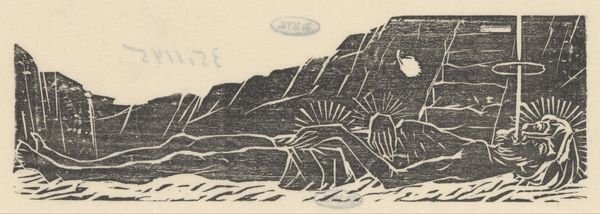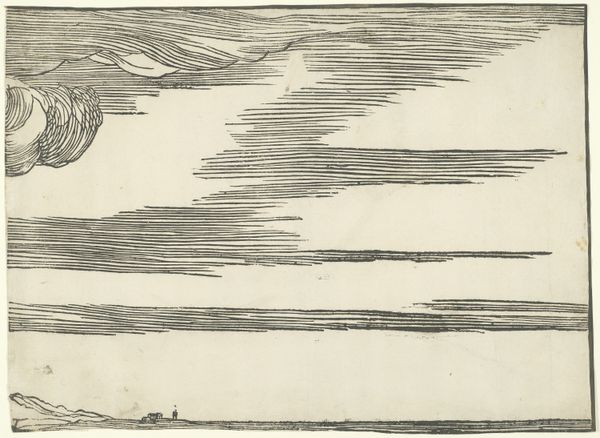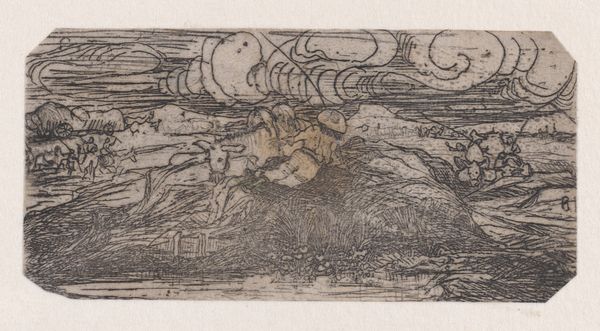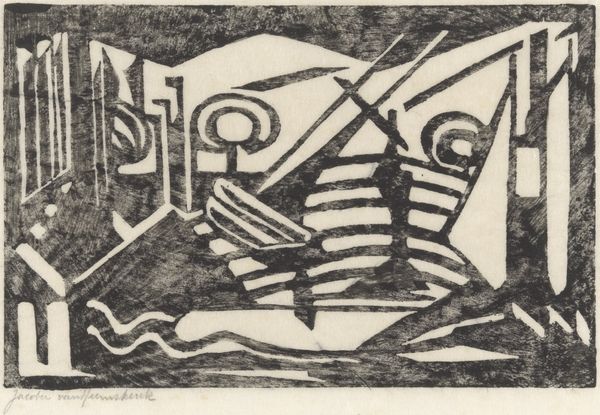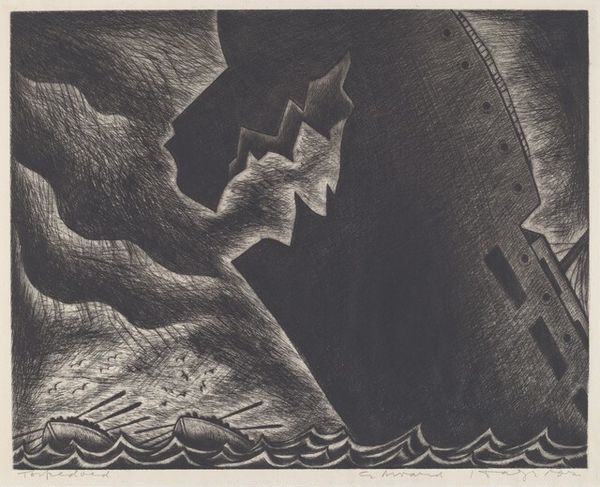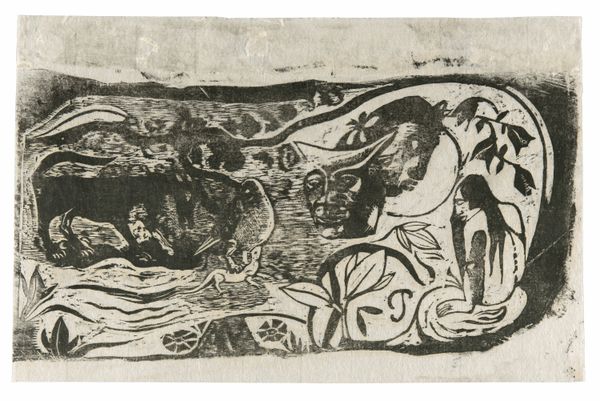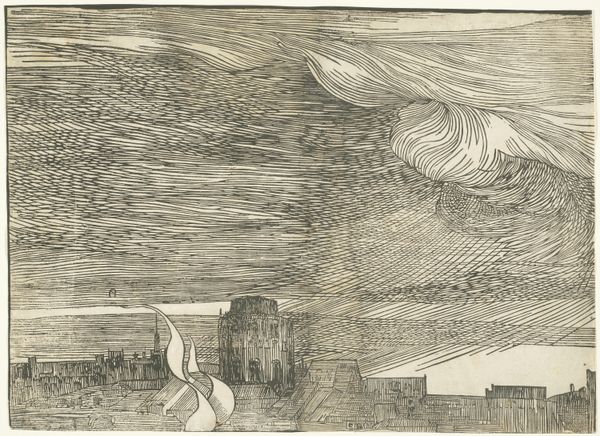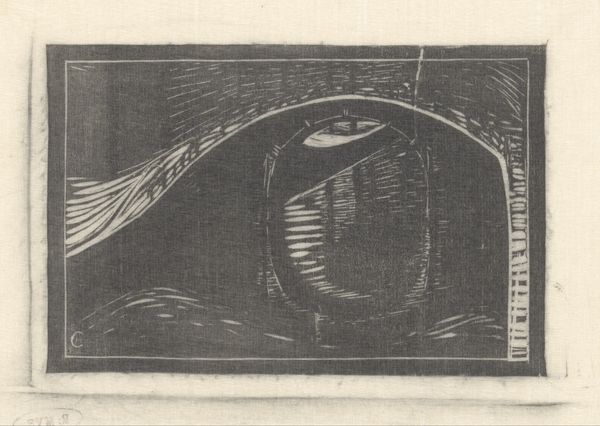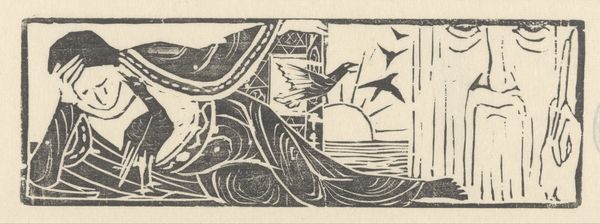
drawing, graphic-art, print, woodcut
#
drawing
#
graphic-art
#
quirky illustration
#
art-nouveau
#
shading to add clarity
# print
#
pen illustration
#
pen sketch
#
old engraving style
#
landscape
#
personal sketchbook
#
pen-ink sketch
#
woodcut
#
pen work
#
sketchbook drawing
#
doodle art
Dimensions: height 119 mm, width 268 mm
Copyright: Rijks Museum: Open Domain
Curator: Welcome. We’re standing before Mathieu Lauweriks’ "Gevleugelde figuren in heuvellandschap", or “Winged Figures in a Hilly Landscape”. Created sometime between 1894 and 1935, it's a graphic work, a print possibly made using woodcut techniques. Editor: My initial impression is one of stark contrast and almost dreamlike symbolism. The heavy lines give it a somewhat gothic feel, wouldn't you say? And those stylized figures… are they angels presiding over a transformed world? Curator: It does evoke a spiritual or even allegorical narrative. Lauweriks was deeply involved with theosophy and sought to integrate geometric principles into his art. You can see this reflected not only in his application of art nouveau, but the mathematical organization of space and form within the artwork itself. The landscape, reduced to simple shapes, feels almost like a stage. Editor: Precisely! The reduction of elements heightens the symbolic weight. Are we looking at themes of ascension, or perhaps some commentary on power? Notice how the winged figures are elevated, while that solitary figure seems dwarfed. The tension between these elements hints at potentially complex sociopolitical undercurrents in what might otherwise be dismissed as religious idealism. Curator: The period during which Lauweriks was active saw immense social and political upheaval. His interest in symbolism and stylized forms places him within a wider artistic and intellectual climate seeking alternative worldviews. This artwork encapsulates a search for spiritual or utopian order. His designs often aimed for a synthesis of art and architecture. Editor: Absolutely, it mirrors other attempts at reconstructing society and selfhood through art during the fin de siècle. Considering that the piece appears during the rise of industrialization and colonial expansion, the dreamlike landscapes become ways of processing or critiquing the impact of modernization. Perhaps he's reflecting the anxieties tied to rapid socio-economic shifts. Curator: That's an astute point. Lauweriks and others within the theosophical movement, were advocating an integrated approach to design—where art and life would come together to cultivate an environment of progress and moral growth. This image becomes less a piece of aestheticism, and more of a call for harmonizing both the artistic with a kind of symbolic order. Editor: Looking at it now, it's tempting to see it as less a landscape and more of a vision. What begins as something stylistic ends as something powerful, which forces the viewer into their own critical lens to ponder the meaning, context, and impact on art’s response to moments of profound change. Curator: I agree. The stark contrast and stylized forms compel a reaction, a connection between then and now. It encourages contemplation. Editor: Indeed. An artwork that whispers of both hope and unease, even across a century.
Comments
No comments
Be the first to comment and join the conversation on the ultimate creative platform.
